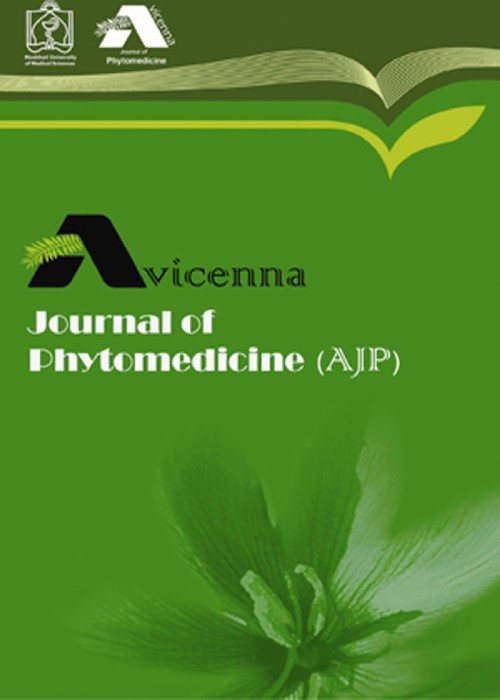The essential oils compositions of Iranian Oregano (Origanum vulgareL.) populations in field and provenance from Piranshahr district, West Azarbaijan province, Iran
Author(s):
Abstract:
Objective
Origanum vulgare L. is rarely cultivated in Iran but it is the only species of the Origanum genus growing wild in this country. O.vulgare L. is widely spread all over the country. In this study, parameters of content, composition and antioxidant activity of the essential oils of domestic and wild Iranian Oregano populations were compared with one another.Materials And Methods
The extractions were performed using a clevenger-type apparatus and the essential oils in the Oregano plants were obtained by hydro-distillation and analyzed by GC/MS.Results
The essential oils were obtained in the Oregano field at yield of (0.80%) and the 4 provenance Oregano (ranging from 0.93% to 1.66% v/w). In cultivated plant 22 constituents, representing 94.02% and in 4 provenance plants (O.v-w1--- O.v-w4), 21, 25, 22, 20 constituents, representing 96.55%, 95.66%, 95.8%, 94.48% of the oils, respectively, were identified. The two major constituents of the essential oils, carvacrol ranging from 23.54 to 67.09% and, γ-terpinene ranging from 7.71 to 20.94% were present in relatively equal amounts in all five samples from different localities. Five chemotypes of essential oils were identified. The main chemotype was carvacrol-γ-terpinene. Furthermore, the antioxidant activity of essential oils of O.vulgare using DPPH radical scavenging was determined. All extracts exhibited almost the same pattern of antioxidant activity as ascorbic acid (vit C). Conclusion
Our findings demonstrated that the chemical composition of the essential oils of O. vulgare L. varies considering geographical location of collection site, climate and other ecological conditions which suggest both intrinsic/genetic and extrinsic/environmental factors such as: altitude, edaphic, temperature, humidity and climate, may play important roles in deter mining the oils composition.Language:
English
Published:
Avicenna Journal of Phytomedicine, Volume:1 Issue: 2, Autumn 2011
Page:
106
magiran.com/p899089
دانلود و مطالعه متن این مقاله با یکی از روشهای زیر امکان پذیر است:
اشتراک شخصی
با عضویت و پرداخت آنلاین حق اشتراک یکساله به مبلغ 1,390,000ريال میتوانید 70 عنوان مطلب دانلود کنید!
اشتراک سازمانی
به کتابخانه دانشگاه یا محل کار خود پیشنهاد کنید تا اشتراک سازمانی این پایگاه را برای دسترسی نامحدود همه کاربران به متن مطالب تهیه نمایند!
توجه!
- حق عضویت دریافتی صرف حمایت از نشریات عضو و نگهداری، تکمیل و توسعه مگیران میشود.
- پرداخت حق اشتراک و دانلود مقالات اجازه بازنشر آن در سایر رسانههای چاپی و دیجیتال را به کاربر نمیدهد.
دسترسی سراسری کاربران دانشگاه پیام نور!
اعضای هیئت علمی و دانشجویان دانشگاه پیام نور در سراسر کشور، در صورت ثبت نام با ایمیل دانشگاهی، تا پایان فروردین ماه 1403 به مقالات سایت دسترسی خواهند داشت!
In order to view content subscription is required
Personal subscription
Subscribe magiran.com for 70 € euros via PayPal and download 70 articles during a year.
Organization subscription
Please contact us to subscribe your university or library for unlimited access!


